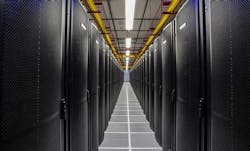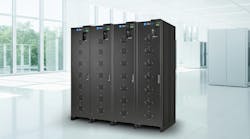In the latest AFCOM State of the Data Center Industry study, we found that data center leaders really have their heads in some interesting places. Beyond cooling, power consumption, rack density, and even edge computing, it’s pretty amazing to see where decision makers are investing.
The report,which I helped co-author, identified five trends that IT organizations expect to be a priority in the coming year. Some, like flash storage, are already seeing wide implementation. others may surprise you.
Within the next 12 months, State of the Data Center participants said they are most likely to either implement or consider implementing flash storage (70%), hyperconverged infrastructure (56%), Linux container management and orchestration tools (51%), BYOD – Bring Your Own Device (51%) and SDN (48%) and OpenStack cloud software (48%).
Let’s taker a look at each of these top 5 data center strategies and understand why they’re important.
Flash Storage
Leading organizations and data center leaders are actively deploying all-flash storage for very good reasons. We’re way beyond some of the original challenges facing all-flash arrays and associated SSD devices. For example, Pure Storage’s appliances deliver 99.9999% availability, inclusive of maintenance, failures, and now generational upgrades. You’re talking literally just a few seconds (of that) of outages per year.
“Advancements in SSD technology and lower price points are driving broader SSD adoption and are making SSDs a ubiquitous storage technology,” said Jeff Janukowicz, research vice president for Solid State Drives and Enabling Technologies. “SSD adoption in the client PC and in the enterprise data center market continues to increase, which will drive SSD unit shipments to grow at a 2015–2020 CAGR (compound annual growth rate) of 16.9 percent.”
A recent Forrester study (commissioned by Pure Storage) took a deeper dive into the economic impacts of all-flash on the modern data center. Throughout the study, Forrester found that power and cooling savings totaled $74,231 over three years and assume a cost per KWH for power of $0.14 and a cost per KWH for cooling of $0.10. Data center leaders are looking at delivering new levels of performance while still optimizing data center space. With the increases in rack density, solutions like all-flash storage can absolutely give you a competitive advantage.
Hyperconverged Infrastructure (HCI)
The latest AFCOM State of the Data Center report indicated that the majority of respondents report rack power density is increasing. The estimated mean target rack power density is 7.3 kW. Here’s a look at the trends:
Trends in rack density in the 2018 State of the Data Center Survey. (Graphic: AFCOM)
That same report also indicates very little growth around actual data center capacity requirements. This means that data center leaders are actually leveraging better tools to design their data centers and even edge solutions.
What’s leading the way? As the report points out, IT organizations are most likely to have already implemented new kinds of advanced solutions, like hyperconverged infrastructure(HCI). Hyperconvergence incorporates cloud-like infrastructure economics and flexibility into the enterprise without negatively impacting performance, reliability and availability. Its “all-in-one” architecture enables it to serve as a building block that can be added as needed as opposed to purchasing/upgrading components like servers and storage every three to five years.
A recent IDC study found that 75 percent of HCI deployments replace existing infrastructure, including networking. Furthermore, as Gartner points out, Hyperconverged Infrastructure (HCI) is a growing trend for today’s data centers because it reduces costs, increases scalability, and protects data. HCI is reported to be the fastest-growing segment at a CAGR of 48%, slated to exceed $10 billion by 2021.
With the distribution of IT and new requirements around concepts like edge, data center leaders are look at more efficient ways to deploy infrastructure and support evolving initiatives. In our AFCOM report, we found that four in 10 respondents have either deployed or planned to deploy edge compute capacity. HCI can help make this entire process as efficient as possible.
(Graphic: Lenovo)
As per the diagram above, the evolution of infrastructure allows organizations to deploy effective notes which can scale rapidly. From there, we see how new solutions around software-defined technologies are impact the next generation of data center solutions. We’ll touch on that later. The bottom line is that HCI is a great way to remove legacy gear and deploy new types of data center design.
Linux Container Management & Orchestration Tools
This one was really interesting to see in the top 5. The actual market for containers and container management is fiercely competitive. Why the massive interest?
Application containers can include runtime components from security to monitoring, orchestration networking and storage – basically the code required to execute and alter a piece of software – in a single package regardless of the infrastructure it sits on. To that extent, containers go hand in hand with continuous development, agile, and DevOps practices. That said, there are a few solutions out there to examine: Kubernetes, Docker Swarm, and Mesosphere, among others. You can also extend container management into Google Cloud Platform, AWS, or Azure.
“Containers, while widely used by hyperscale web companies, are still a very emerging technology for the enterprise,” explains Mary Johnston Turner, research vice president, Enterprise Systems Management Software. “IDC expects that for production environments, most enterprise teams will prefer container management solutions that are embedded in broader infrastructure management software and SaaS solutions and will resist implementing a standalone greenfield environment.”
Data center operators absolutely want that DevOps business, and want to have container management integrate with infrastructure management. 451 Research estimated in 2017 that the application container segment reached a robust $762 million in 2016 and is forecast to grow at a 40 percent compound rate over the next four years to $2.7 billion. DevOps is a hot market right now. If you, as a data center leader want to differentiate yourself, look to container management as possibility.
BYOD
Believe it or not, we’re still seeing growth in the adoption of mobility services. A recent survey from Gartner found that mobile device adoption in the workplace is not yet mature. Although 80 percent of workers surveyed received one or more corporate-issued devices, desktops are still the most popular corporate device among businesses, with more than half of workers receiving corporate-issued desktop PCs. To that extent, mobility and BYOD (Bring Your Own Device) solutions will only continue to evolve as healthcare organizations find more use-cases and benefits in supporting a mobile workforce.
“BYOD strategies are the most radical change to the economics and the culture of client computing in business in decades,” said David Willis, vice president and distinguished analyst at Gartner. “The benefits of BYOD include creating new mobile workforce opportunities, increasing employee satisfaction, and reducing or avoiding costs.”
As Gartner points out, BYOD drives innovation for data center leaders and the business by increasing the number of mobile application users in the workforce. Data centers now need to find ways to support BYOD both as an initiative and possible service model. We know that we’re becoming more connected. The data centers which can support this new level of connection will be the ones with happy end-users.
Software-Defined Networking (SDN)
New virtual services are sweeping the modern data center and are actually making the data center administrators’ life easier. Just imagine having the ability to abstract vast amounts of resources and manage heterogeneous environments all from one logical controller. New infrastructure components no longer care what type of hardware you’re using – it cares about how you are presenting resources.
Software-defined technologies have come quite a long way. These logical systems are capable of introducing amazing optimizations for the data center platform as well as your business model. Software-defined networking is a new way to control resources on a truly distributed plane. The ability to abstract powerful networking physical components into logical services and features can help a cloud platform scale and become more robust. It also allows the data center to control key resources more efficiently. One of those resources that is the network, which has begun to sprawl physically quite a bit. As we interconnect with cloud, the edge, and distributed IT architectures, simplifying the network is the logical way to go.[clickToTweet tweet=”New virtual services are sweeping the modern data center and are making data center administrators’ life easier.” quote=”New virtual services are sweeping the modern data center and are making data center administrators’ life easier.”]
As new applications require cloud delivery or deployment, the demand for transferring data into the cloud is increasing. This requires a new approach to managing data with a layer of software on top of existing network hardware to drive innovation. Industry analyst firm Gartner predicts that by 2019, 70 percent of existing storage array products will also be available as “software only” versions. And, by 2020, between 70 percent and 80 percent of unstructured data will be held on lower-cost storage managed by software-defined storage environments.
SDN can do a lot for your data center. Imagine having the ability to recreate an entire networking environment to mirror an existing infrastructure. The difference? Everything is network virtualization and completely isolated. SDN can help create connections between applications, services, VMs and numerous other workloads. Effectively, administrators are able to test their environment, disaster recovery (DR) plan, or high-availability methodology completely from a secured and isolated configuration. From there, you’re looking at capabilities like Network Function Virtualization (NFV), WAN traffic control, load-balancing, security, WANOP, and even SD-WAN.
The Road Ahead
A big challenge for many data center leaders is finding good people who can help out. Don’t let that stop you, however. Be sure to find the right expertise and expand your own SDN practice.
The data center consists of a lot of moving parts. All of these new solutions we discussed are aimed at making life easier. Remember, further down that same list we have Open Compute implementations as well as working with cloud solutions like OpenStack. Moving forward, data center leaders will absolutely need to think differently to differentiate themselves in the market. Beyond just providing infrastructure, how are you supporting the new initiatives we’ve listed?
As you evolve your own data center model, be sure to look at the entire list to see where you can adopt a new technology and create a new competitive advantage.
About the Author



